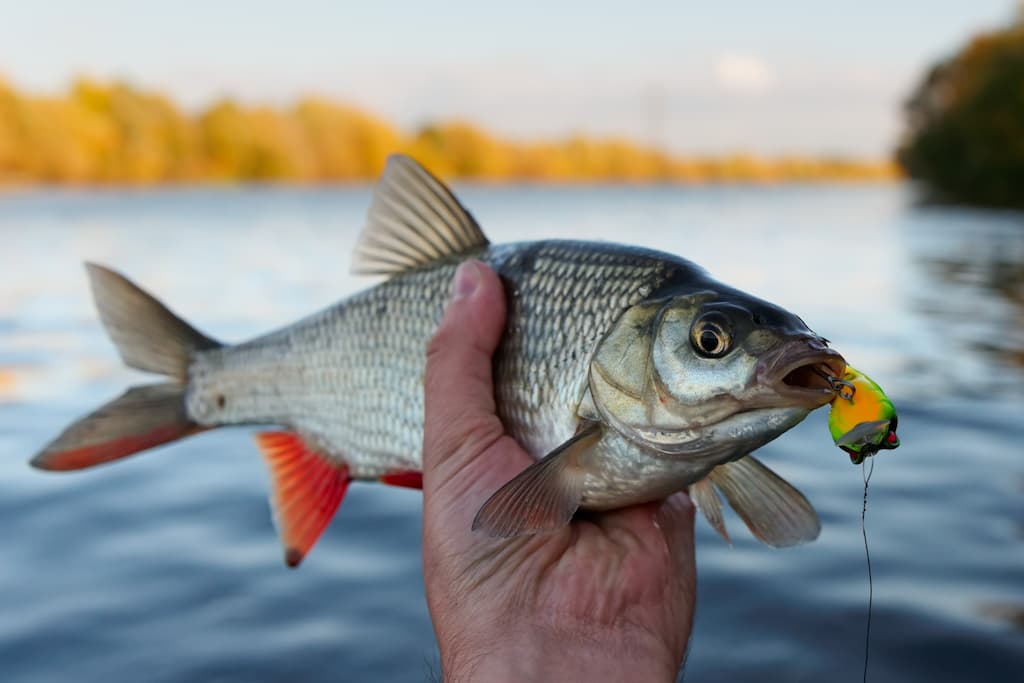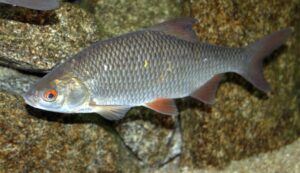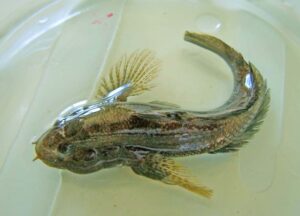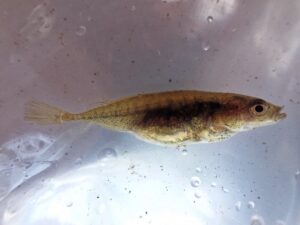How to make the difference between ide or orfe and rudd

When it comes to freshwater fishing, being able to distinguish between different fish species like Ide (Orfe) and Rudd is essential.
In this article, we will explore how to differentiate between Ide or Orfe and Rudd, two commonly targeted fish species. By understanding their unique characteristics, you can enhance your fishing experience and improve your chances of success.

Understanding Ide or Orfe
Ide or Orfe, also known as Leuciscus idus, is a freshwater fish species found in Europe. They are known for their slender and elongated body shape, as well as their silvery appearance. Ide or Orfe are highly sought after by anglers for their agility and fighting spirit.
Understanding Rudd
Rudd, scientifically known as Scardinius erythrophthalmus, is another freshwater fish species found in Europe. They are characterized by their deep-bodied profile and distinctive golden or bronze coloration. Rudd are known for their spirited nature and can provide an exciting challenge for anglers.
Key Differences between Ide or Orfe and Rudd
- Physical Appearance: Ide or Orfe have a slender and elongated body shape with a silvery coloration. They have a slightly upturned mouth and a forked tail. On the other hand, Rudd have a deeper body profile with a golden or bronze hue. They have a more rounded head and a deeply forked tail.
- Habitat: Ide or Orfe are commonly found in still or slow-flowing freshwater environments such as lakes, ponds, and rivers. They prefer areas with abundant vegetation and clear water. Rudd, on the other hand, can be found in a variety of freshwater habitats, including lakes, ponds, and slow-moving rivers.
- Feeding Habits: Ide or Orfe are primarily herbivorous, feeding on aquatic plants, algae, and insects. They are often observed near the water’s surface, where they actively feed on floating food sources. Rudd, on the other hand, are omnivorous and feed on a wide range of food items, including insects, small fish, and plant matter.
- Reproduction: Ide or Orfe typically spawn during the spring and early summer months, often in shallow areas with submerged vegetation. They exhibit adhesive egg-laying behavior, attaching their eggs to aquatic plants for protection. Rudd also spawn during the spring and early summer, typically in densely vegetated areas. They scatter their adhesive eggs among aquatic vegetation.

Similarities between Ide or Orfe and Rudd
- Both Ide or Orfe and Rudd are freshwater fish species found in Europe.
- They are popular targets for freshwater anglers due to their sporting qualities and the thrill they provide during the catch.
- Ide or Orfe and Rudd both exhibit strong swimming abilities and can offer exciting challenges for anglers.
Identifying Ide or Orfe
To identify Ide or Orfe while fishing, look for the following characteristics:
- Slender and elongated body shape
- Silvery coloration
- Slightly upturned mouth
- Forked tail
Identifying Rudd
To identify Rudd during your fishing adventures, observe the following features:
- Deep-bodied profile
- Golden or bronze coloration
- Rounded head
- Deeply forked tail
Choosing the Right Fish for Freshwater Fishing
When planning your freshwater fishing excursion, consider the following factors to make an informed decision:
- Research the preferred habitat and feeding habits of both Ide or Orfe and Rudd.
- Determine the fishing techniques and bait preferences that work best for each species.
- Assess the fishing regulations and restrictions in your area to ensure compliance.
By understanding the characteristics and behavior of each species, you can select the appropriate fish to target and increase your chances of a successful fishing trip.
Main differences between Ide and Rudd in details
Differences in Habitat and Distribution
Ide or Orfe are commonly found in still or slow-flowing freshwater environments, particularly in Europe. They thrive in areas with abundant vegetation and clear water conditions. Rudd, on the other hand, can be found in various freshwater habitats across Europe, including lakes, ponds, and slow-moving rivers.
Differences in Physical Characteristics
Ide or Orfe have a slender and elongated body shape, allowing them to swiftly move through the water. They have a silvery coloration, a slightly upturned mouth, and a forked tail. Rudd, on the other hand, have a deeper body profile, giving them a more robust appearance. They exhibit a distinctive golden or bronze coloration, a rounded head, and a deeply forked tail.
Differences in Feeding Habits
Ide or Orfe primarily feed on aquatic plants, algae, and insects. They are often observed near the water’s surface, actively feeding on floating food sources. Rudd, on the other hand, have a more varied diet. They consume a wide range of food items, including insects, small fish, and plant matter. They are opportunistic feeders and can be found in different water depths.
Differences in Reproduction
Ide or Orfe typically spawn during the spring and early summer months. They prefer shallow areas with submerged vegetation for egg-laying. The adhesive eggs are attached to aquatic plants, offering protection and stability. Rudd also spawn during the spring and early summer. They scatter their adhesive eggs among aquatic vegetation in densely vegetated areas.
Health and Care Tips for Ide or Orfe
To ensure the well-being of Ide or Orfe during catch-and-release fishing, consider the following tips:
- Handle the fish gently and minimize the time they spend out of the water.
- Use barbless hooks or crimp down the barbs to facilitate easier hook removal.
- Support the fish horizontally and in an upright position when returning them to the water.
- Avoid fishing during extreme temperature conditions to reduce stress on the fish.
Health and Care Tips for Rudd
When practicing catch-and-release fishing for Rudd, follow these guidelines:
- Handle the fish with care to avoid injury or stress.
- Use appropriate fishing tackle to minimize the risk of deep hooking.
- Wet your hands before handling the fish to protect its slime coat.
- Allow the fish to recover by gently cradling it in the water until it swims away under its own power.






